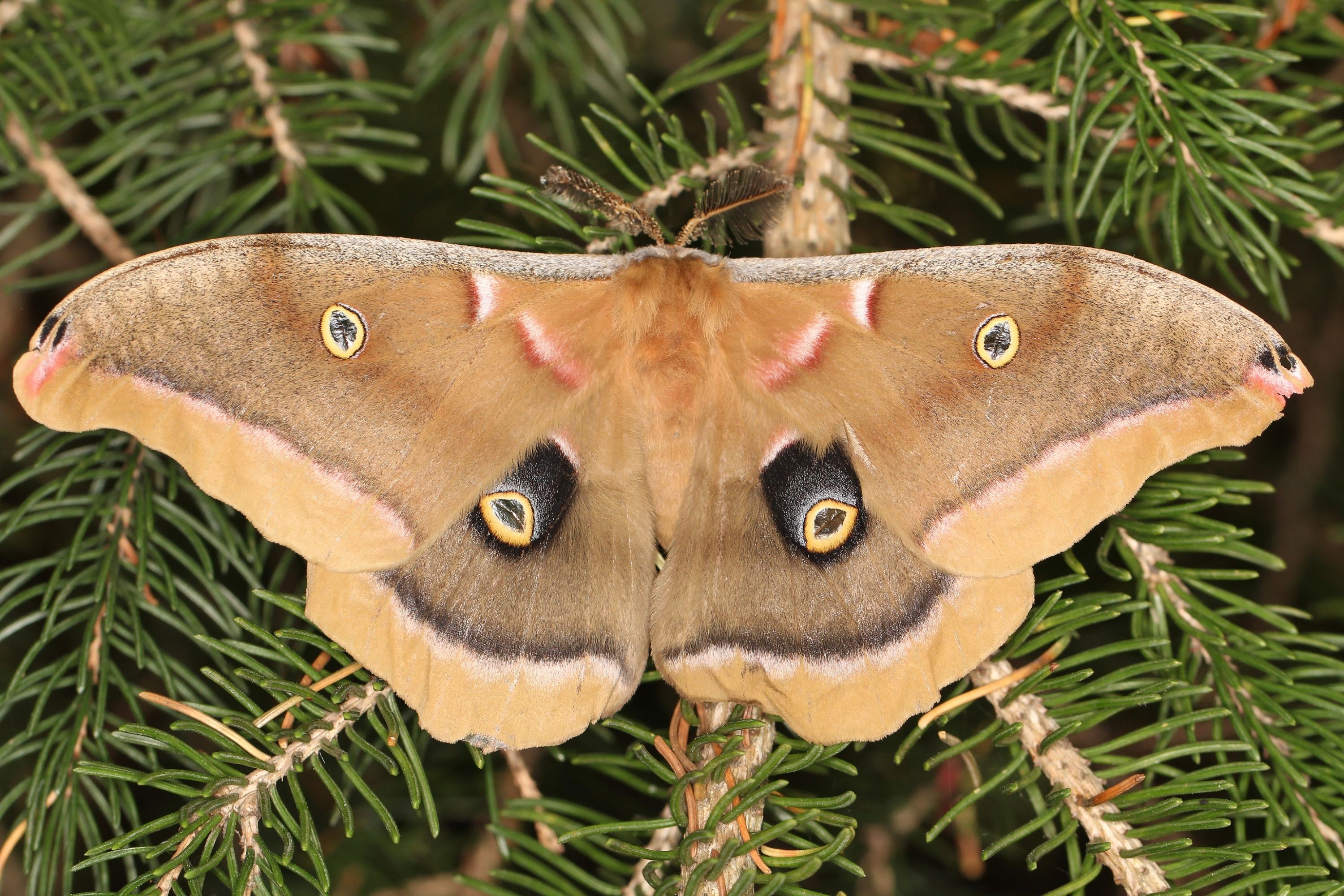Hercules moth
(Coscinocera hercules)

Description
Coscinocera hercules, the Hercules moth, is a moth of the family Saturniidae, endemic to New Guinea and northern Australia. The species was first described by William Henry Miskin in 1876. Adults have a wingspan of about 27 centimetres (11 in), making it the largest moth found in Australia, and its wings have the largest documented surface area (300 square centimeters) of any living insect. They are mainly colored golden-brown and white, with transparent spots on each of the four wing sections the coloring and patterns between sexes is mostly static. However, adult males have longer, slimmer tails on their wings than females do, making it somewhat easy to differentiate them in this way. Their larvae grow up to 12 cm (about 4.7 in), and will weigh around 29 grams in their final instar. They are a pale-blue or green color, with red dots along their sides and yellow spines. Coscinocera is a genus of large moths from the family Saturniidae, that are found in Australasia. The genus was erected by Arthur Gardiner Butler in 1879. The genus contains Coscinocera hercules, the largest moth in Australia, and the insect with the largest wing surface area.
Taxonomic tree:







